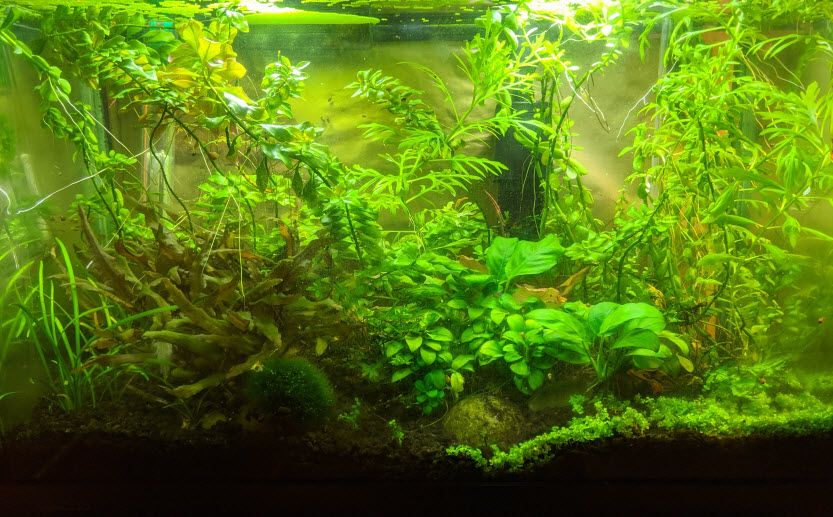
It’s been about 20 months since I took the 10-gallon tank out of mothballs for an arguably eccentric task. Struck by a pang of curiosity, I resolved to try my hand at the cultivation of aquatic plants. The botanical basics are simple enough, the challenge being achieving a dynamic balance among the building blocks — light, water, and nutrients — to create a thriving environment. At various times I’ve had to battle outbreaks of slimy cyanobacteria and stubborn green spot algae, but on the whole I’ve had the pleasure of watching my modest underwater garden grow. In pre-COVID times, the aquarium actually achieved the status of a conversation piece among my visitors.
The sprigs and seedlings that made their way here from an Arizona nursery at the end of January 2019 have taken root in the harsh, hyper-partisan climate of Washington, DC. Here are some highlights.



Fig. 3: Once established, the leaves of the Dwarf Water Lily (Nymphaea stellata) will begin to reach for the surface and become lily pads. Squint and one can feel a connection to the Musée de l’Orangerie or Monet’s flower garden at his home in Giverny.